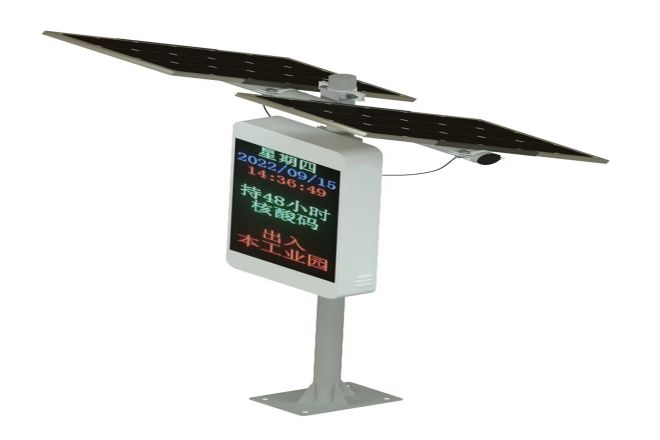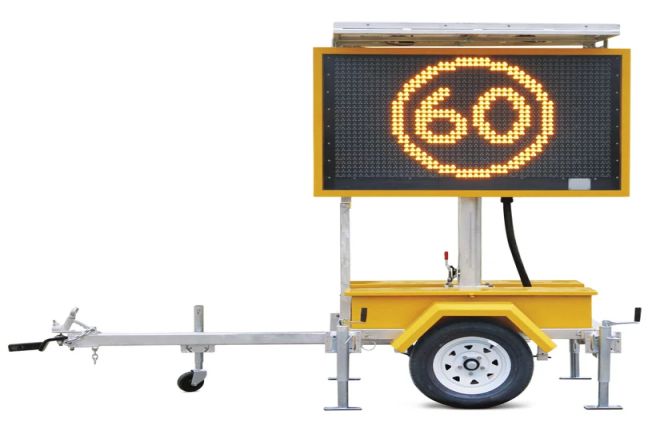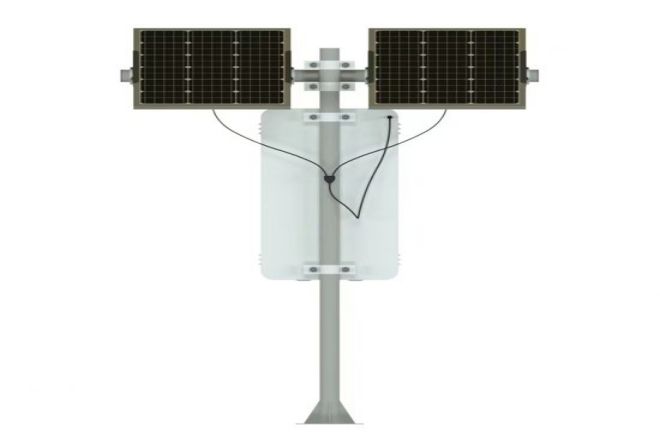Introduction

With the increasingly serious problems of global climate change and environmental pollution, green, environmentally friendly, and sustainable scientific and technological innovation has become the common pursuit of all mankind.
Solar LED display is a new green technology product that emerged under such a background. It skillfully combines solar technology with LED display technology to realize the efficient use of energy and the practice of environmental protection.
This article will show you the solar LED display screen. Let’s read it together!
1. What is a solar LED display?
Solar LED display is a green and environmentally friendly display device that combines solar technology and LED display technology. It is mainly composed of four parts:
Solar panels
Current transformer
Battery pack
LED display
Solar panels are responsible for converting solar energy into electrical energy, and the converter converts these electrical energies into the voltage and current required for the LED display.
The battery pack provides electrical energy for the LED display when the solar energy is insufficient or at night. The LED display is composed of light-emitting diodes, which can display text, graphics, images, market, and other information.
2. Working principle of solar LED display

First of all, solar panels are the core energy supply components of solar LED displays. Its function is to convert solar energy into electricity and provide continuous power for the whole system. Solar panels are closely arranged by multiple solar cell units, each of which is a photoelectric converter.
When sunlight shines on the solar panel, photons will interact with the semiconductor material on the battery board, causing electrons to be excited from the atoms and form a photoelectric current. This process does not require any external energy input. It is completely the transformation of natural light energy, so it is environmentally friendly and efficient.
The design and manufacture of solar panels are essential for their conversion efficiency and service life. Usually, solar panels use high-purity silicon material as a semiconductor to form the structure of optoelectronic devices through a precise process. At the same time, in order to improve the conversion efficiency, the surface of the solar panel will be covered with an anti-reflective film to reduce the reflection loss of light.
In addition, the battery board needs to undergo strict quality control and environmental adaptability testing to ensure that it can work stably and efficiently under various environmental conditions.
Next, the converter plays a key role in energy conversion and adjustment in the solar LED display system. Its function is to convert the DC energy generated by the solar panel into the AC power required for the LED display and adjust and control it.
The converter converts unstable solar input into stable output voltage and current through internal circuits and control algorithms to meet the working needs of LED displays. At the same time, the converter also has overvoltage, overcurrent, short circuit, and other protection functions to ensure the safe and stable operation of the system.
The battery pack is another important part of the solar LED display system. Its main function is to provide continuous power support for the LED display when solar energy is insufficient or at night. Battery packs usually use high-performance lithium batteries or lead-acid batteries, which have the advantages of large capacity, long cycle life, and low self-discharge rate.
Through reasonable charging management and discharge control, the battery pack can replenish electricity in time when solar energy is insufficient to ensure the normal operation of the LED display. At the same time, the battery pack also has protection functions such as overcharge, overcharge, and overcurrent to extend the service life of the battery and the stability of the system.
Finally, the LED display is the core output device of the entire solar LED display system. It is composed of countless light-emitting diodes (LEDs). By controlling the brightness and color changes of each LED, it can display text, graphics, images, markets, and other information.
The LED display has the advantages of high brightness, high definition, low power consumption, etc., and can work stably under various environmental conditions. At the same time, because the light-emitting principle of the LED display converts electrical energy directly into light energy, it does not emit heat and harmful substances, which is fully in line with the concept of green environmental protection.
3. The energy conversion rate of solar LED display
The energy conversion rate of solar LED displays varies according to factors such as product, manufacturing process, and environmental conditions, and there is no unified value. The conversion rate is affected by the quality of solar panels, manufacturing process, installation angle, geographical location, sunshine time, cloud occlusion, and other factors.
Generally speaking, high-quality solar panels have high energy conversion efficiency, which can usually reach about 15% to 20%. However, this is only a general reference range, and the actual conversion rate may vary according to specific conditions.
In addition, it should be noted that the overall energy utilization efficiency of the solar LED display depends not only on the conversion rate of the solar panel but also on the design, management, and maintenance of the whole system. Therefore, when choosing a solar LED display, in addition to paying attention to the conversion rate of solar panels, other factors should also be considered, such as system stability, reliability, maintenance cost, etc.
4. Compared with traditional LED displays, the advantages and disadvantages of solar LED displays

1). Advantages:
Environmental protection: The solar LED display uses solar energy as energy and does not require a traditional electricity supply, so it does not produce carbon dioxide and other environmental pollutants, which is environmentally friendly.
Energy utilization efficiency: The traditional LED display relies on power supply and has losses in the process of energy conversion and transmission. The solar LED display directly converts solar energy into electric energy without the conversion and transmission process, and the energy utilization efficiency is higher.
Flexibility: The solar LED display can be installed in various environments without power supply restrictions. It is especially suitable for outdoor advertising, traffic instructions, and other places that need to stay away from the power supply.
Reduce operating costs: Because solar LED displays do not need to pay for electricity, long-term operating costs are low, which is economically beneficial for long-term use projects.
2). Disadvantages:
Initial investment cost: The initial investment cost of solar LED display screens is usually higher than that of traditional LED display screens because it is necessary to buy solar panels, batteries, and other components.
Dependent on the weather: The performance of the solar LED display is affected by weather conditions. On rainy days or at night, the supply of solar energy is insufficient and needs to be powered by batteries. If the battery capacity is insufficient or improperly maintained, it may affect the normal operation of the display.
Maintenance requirements: Although the maintenance cost of solar LED displays is low, it is still necessary to regularly check and maintain solar panels, batteries, and other components to ensure their normal operation.
5. Application field of solar LED display

Solar LED displays are widely used in a wide range of applications, including but not limited to the following aspects:
Outdoor advertising: Solar LED display screens can be applied to outdoor billboards, commercial blocks, highways, and other places to attract the attention of pedestrians and drivers and improve the advertising effect.
Traffic instructions: The solar LED display screen can be used as a traffic sign to display traffic information, road condition prompts, traffic rules, etc., to improve road traffic safety and traffic efficiency.
Scenic guide: In scenic spots, parks, museums, and other places, solar LED display screens can be used to provide scenic spot introductions, guided tour information, service tips, etc., to improve the tourist experience.
Information release: Solar LED display screens can be used in schools, hospitals, government agencies, and other public places to issue notices, announcements, news, and other information to improve the efficiency and coverage of information transmission.
Temporary activities: Solar LED display screens can also be used for temporary activities, such as concerts, exhibitions, celebrations, etc., providing stage background, event promotion, program lists, and other information.
Conclusion
As a green and efficient display technology, solar LED display is bringing profound changes to modern society with its unique advantages.
We have reason to believe that in future development, solar LED displays will shine in more fields, bringing more convenience and innovation to people’s lives and work.
If you want to know more about the LED display, please get in touch with us!
